Find of the Month – April 2020 – Corn Exchange Tokens
- 27th May 2020
A chance find brought to the attention of one of our team helping a neighbour that adds to a bold story of Worcester. In April our archaeologists were all working at home, so our Find of the Month is a little different.
A Corn Exchange Free entry token. Described against their example by the British Library (https://www.britishmuseum.org/collection/object/C_MG-1344) as
Description:
Worcester Corn Exchange ticket; bronze; inscription on both sides; reverse: plough and incised number.
Materials: brass
Technique: incised
Dimensions: Diameter: 1.50 inches (37mm)
Inscriptions:
-
- Inscription type: inscription
- Inscription position: obverse
- Inscription content: WORCESTERSHIRE AGRICULTURAL CORN EXCHANGE ERECTED 1848
This lovely little find may seem to be an innocuous nicely engraved disk, but in fact it is a superb example of a token marking a turn in government legislation enabling trade that saved lives and spawned the erection of a monumental building that remains today.
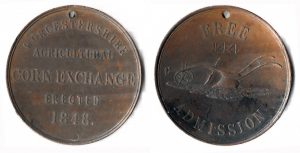 |
The engraving on the token is still clear on both sides, and the material is still relatively unblemished. Clearly visible is that it is a Free token numbered 144 above the inscribed plough and that it was an admission token to the ‘newly’ erected Corn Exchange – in 1848.
Note also that the tokens have a hole in the top so they could be tied to a lanyard.
Why was a Corn Exchange needed?
In 1815 the government introduced “The Corn Laws”. The Corn Laws were a series of statutes enacted to keep corn prices at a high level. This measure was intended to protect English farmers from cheap foreign imports of grain following the end of the Napoleonic Wars. These statutes were tariffs and other trade restrictions on imported food and cereal grains, such as wheat and barley (“corn”) which was enforced in the United Kingdom.
This coincided with the Irish potato famine (The Great Famine, or the Great Hunger, was a period of mass starvation and disease in Ireland from 1845 to 1849) so food imports were all they could rely on and with pressure on the government from the Corn Law Repeal groups, the then Prime Minister, Sir Robert Peel, achieved repeal with the support of the Whigs in Parliament, overcoming the opposition of most of his own party. Economic historians see the repeal of the Corn Laws as a decisive shift toward free trade in Britain.
Corn Exchanges were an opportunity to manage the balance of imported and local produce and many were built around the country in the years following the repeal.
Where is the Corn Exchange?
Which Corn Exchange do you mean?
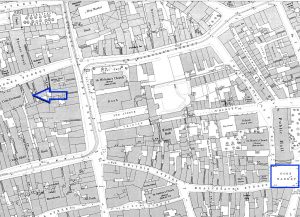
1880 map of Worcester showing the |
1880 map of Worcester with the Corn Exchange outlined to the west, situated on Angel Street where it still stands today |
(1886 Ordnance Survey map of Worcester kindly supplied by Worcester City Historic Environment Record https://www.worcester.gov.uk/planning/heritage/historic-environment-record. You can also download a pdf here)
Following the repeal of the Corn Laws in 1846, there were disagreements over the location which resulted in two committees, each to build a new corn exchange in the City. It resulted in the building of two exchanges, one in the Corn Market, and the other (designed by Henry Rowe and opened first) on Angel Street. Despite being a ruinous affair for its first shareholders, the Angel Street Corn Exchange survived while the Cornmarket building was sold in 1853 and converted into a music hall.
That was quick!
After the repeal in 1846 the Corn Exchange was designed, built and opened (with all the logistics of construction and minting the tokens) within two years…a remarkable achievement.
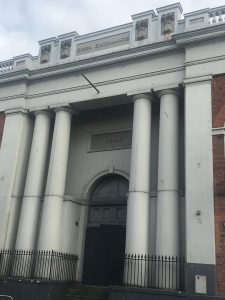 |
The building and railings were given a grade ii listing by Historic England in 1971 (ref. 1359548), so what you see today is very much what you would have seen when it was first built. |
| The renowned art and architectural historian, Sir Nikolaus Bernhard Leon Pevsner, wrote in “Buildings of England: Worcestershire (1968)”
“…a much more controlled piece of work in spite of curious details.” “…and the former Corn Exchange of 1848 is a mighty job, only five bays, but with truly colossal pairs of Tuscan Columns … Arched windows left and right back…”
The building retains the glorious palacade around the roof and the grain storage hoist remains with the doors and drop-plates. The hoist and doors are above the existing passage, which ran alongside the ward boundary, were where ‘Corn’ was stored.
|
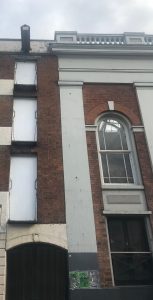 |
Still clearly visible today, the sheaves of corn either side of the proud title “Corn Exchange”
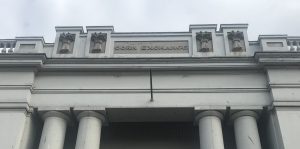
Below that the date of its opening 1848.
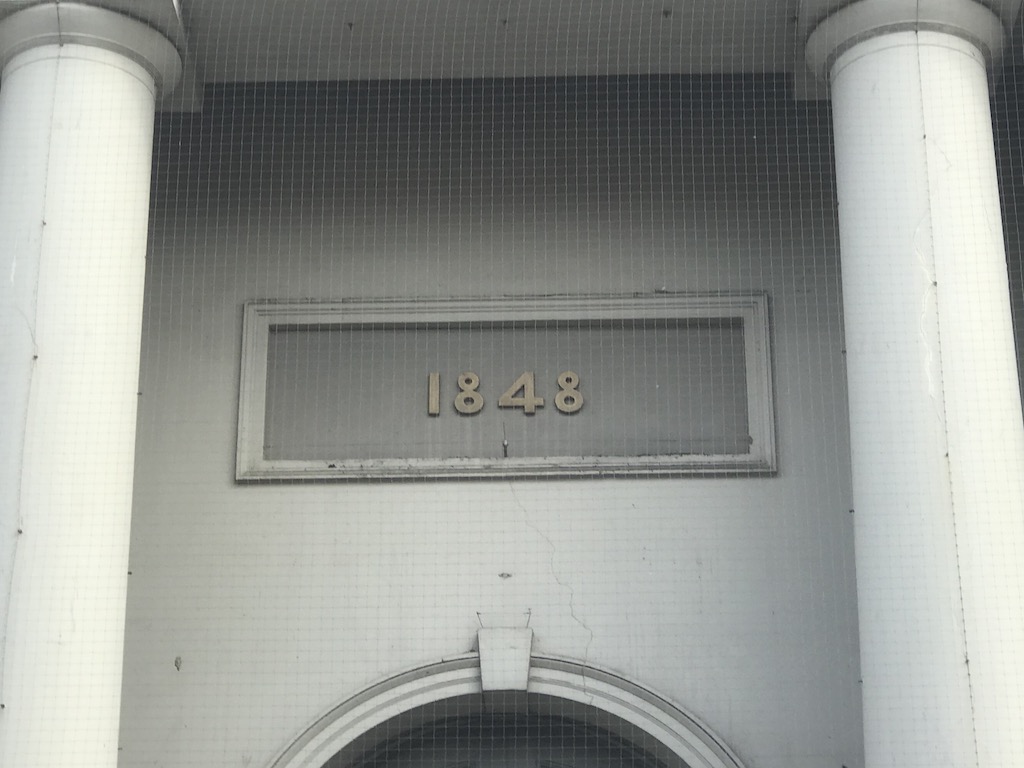
Why Angel Street?
The Corn Exchange was built in an area where existing establishment owners could foresee extra profit for them. It was built next to the “Fountain Inn” and the “Ewe and Flag”, and across the road from the Theatre Royal, which was flanked by another two public houses The Shakespeare Inn (now “The Cricketers”) on one side and the “Horn and Trumpet” on the other side, which bears the same name today.
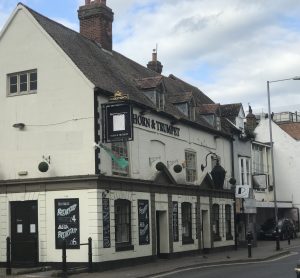
This had the added bonus of traders being able to meet, discuss deals and toast their successes – as they do today no doubt.
In summary …
From just a small, well preserved family heirloom token, we get a great story of Worcester that reflects affluence, greed, and hunger with a magnificent monument to a trade that truly saved lives and that monument, The Corn Exchange, stands proud and protected today surrounded by buildings that were there at the time.
What an incredible story all thanks to the Osbourne and Grubb family descendants, and in particular 9 y/o Delilah Corbett who brought it to our attention.
So, thanks to some home curation and digging into family history, Delilah (and mum Hayley) has helped us expand on a part of history that shaped Worcester.

Delilah and token |

Delilah, mum Hayley and token |
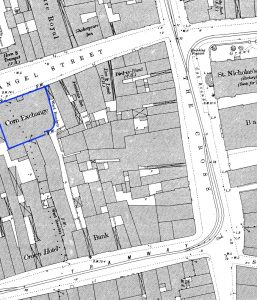
Post a Comment